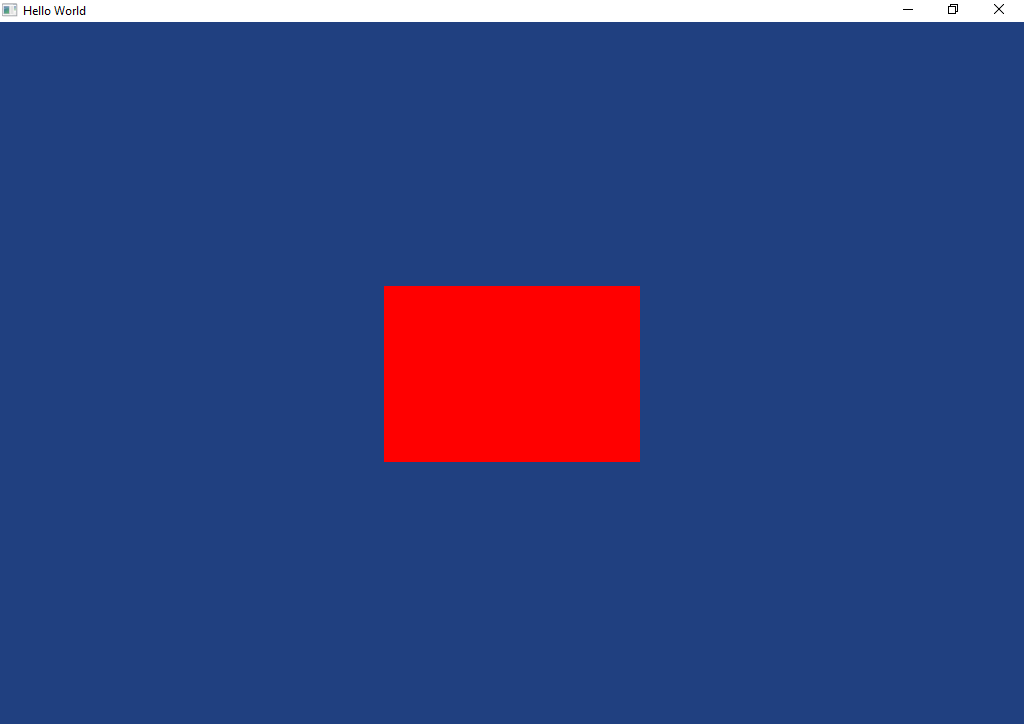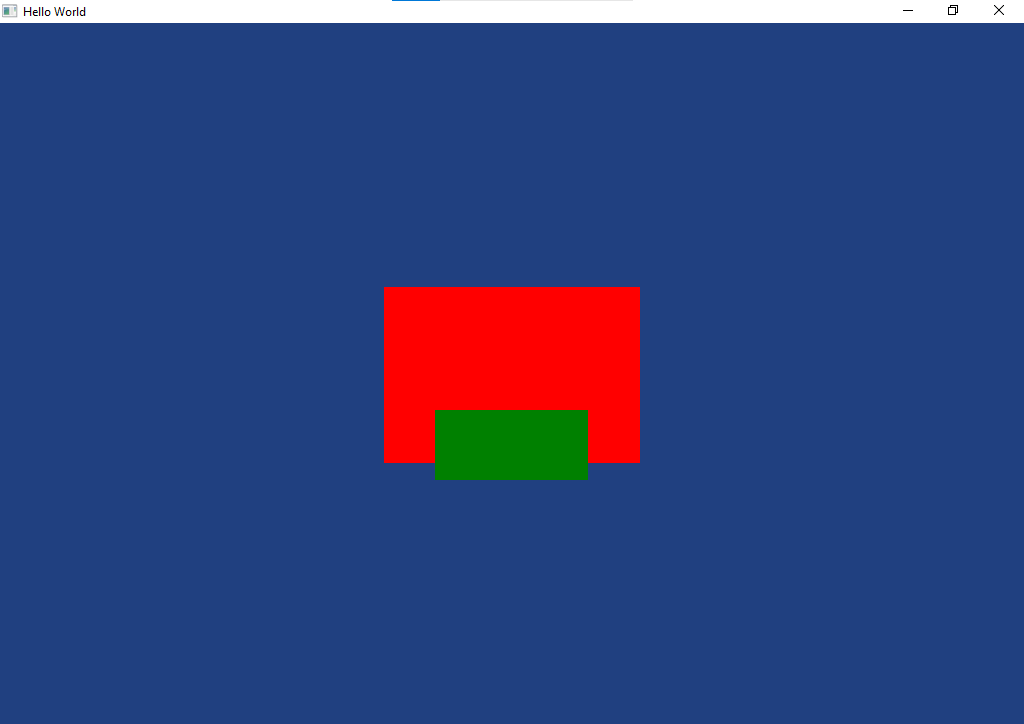This file intends to demonstrate some examples of the use of this library.
class Program
{
static void Main(string[] args)
{
SceneManager.Init(new TestScene(), "Hello World");
SceneManager.Render();
SceneManager.Dispose();
}
}
public class TestScene : Scene
{
public TestScene()
{
var rectangle = new FillRectangle(
new RectF(0.5f, 0.5f, 0.25f, 0.25f), Color.Red
);
this.AddEntity(rectangle);
}
}
-
In this excert of code, we define a filled rectangle - FillRectangle, by passing the location and its size as the first argument, and a color as the second argument.
-
The position and size given are values in the range of [0, 1], where 1 represents the width or the height of the screen, for the X and Y coordinates, respectively.
-
Lastly we add the Entity to the Scene.
-
This is the result:
public class MyEntity : Entity
{
public override void Init()
{
var redRectangle = new FillRectangle(
new RectF(0.5f, 0.5f, 0.25f, 0.25f), Color.Red
);
var greenRectangle = new FillRectangle(
new RectF(0.5f, 0.6f, 0.15f, 0.1f), Color.Green
);
this.AddChild(redRectangle);
this.AddChild(greenRectangle);
}
}
-
Here we created a new Entity, called MyEntity. We also have overriten the Init method, to add two children Entities.
-
The order on which we add the children matters. The children that are added first, are rendered first. Therefor, in this case, the green rectangle will be drawn over the red rectangle.
-
Finally, we replace the code of the TestScene, to add this Entity, instead of the original FillRectangle.
public class TestScene : Scene
{
public TestScene()
{
var myEntity = new MyEntity();
this.AddEntity(myEntity);
}
}

